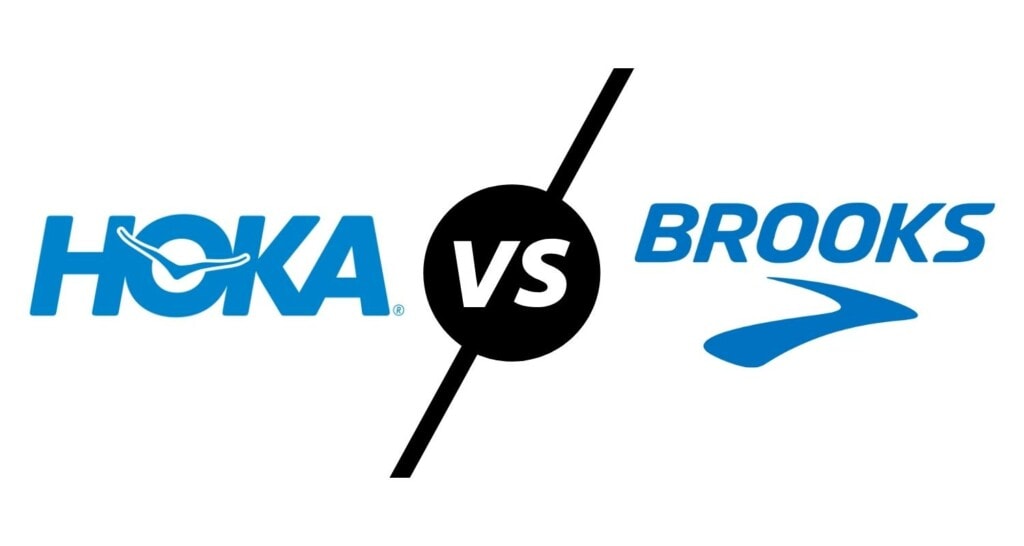Published on: 09/15/2022
While running has always been a popular sport, the growing popularity of trail running has added another layer to the craze. More and more of us sign up for local races, fun runs, marathons, mountain adventures, and ultras. Following this trend, the running shoe industry is booming too. So, among all the popular running shoe brands, it’s becoming more and more challenging to select the best one for you.
Luckily, there’s a vast volume of research and user reviews online. At Runner’s Lab, we have been diligently working through them since 2017 to bring a dispassionate, objective view of the best running shoes out there. Aiming to identify the key patterns and commonalities between lived experience and marketing, we’ve created round-ups of the best road running shoes and the best pairs for the trail.
So, let’s see what this research tells us about the Hoka vs. Brooks debate: which shoe brand is the best for you, and why? Read on to find out the main differences and highlights of these two shoe brands. We’ll cover how Brooks running shoes perform on the road and trails compared to Hoka running shoes, and we’ll look at the type of running sessions each of these brands are best for.
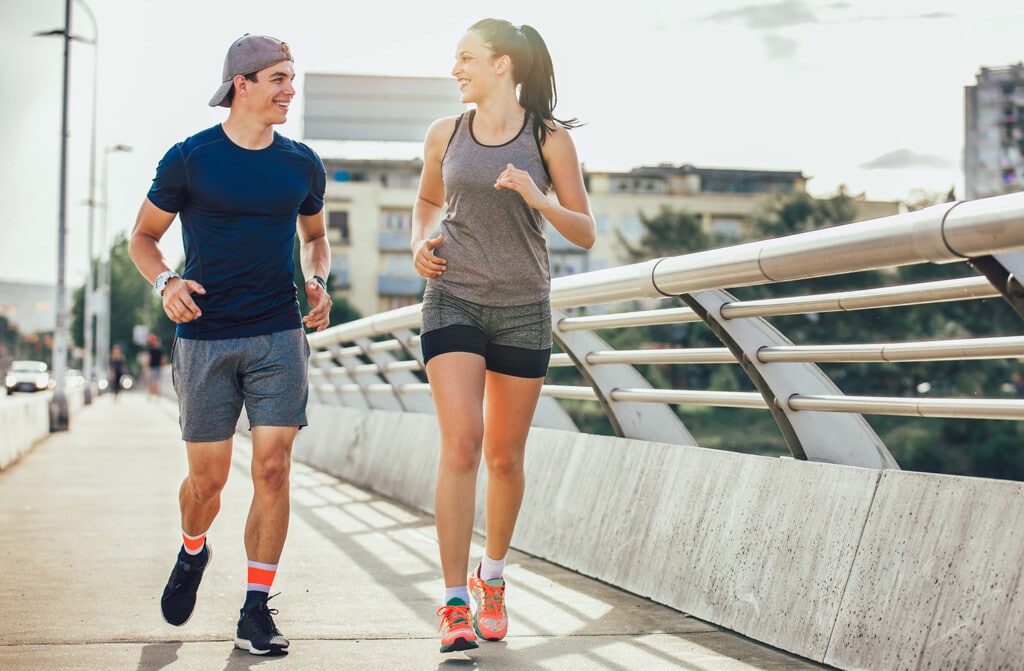
Hoka vs. Brooks: A Brief Overview
To better understand the key features of Hoka shoes and Brooks running shoes, let’s first delve into the history of the brands and their key values, down to technical features and shoe construction.
Hoka One One: the “maximalist” shoe brand
When French brand Hoka (1) rose to prominence in the early 2010s, it made a splash with its extremely cushioned shoe design, in stark contrast to the “minimalist” trend that was all the rage at the time. After its beginnings in Annecy, France, Hoka now operates as a subsidiary of Deckers Outdoor Corporation and is based in California. They have become known for reliable shoe models that combine maximal cushioning with a relatively low profile (heel-to-toe drops of 5mm and below).
You’ll be aware of Hoka if you’re a trail runner, as they sponsor some of the biggest names in the sport, from 3-time Western States Endurance Run (2) winner Jim Walmsley (3) to 100-mile record blaster and Comrades Marathon (4) winner Camille Herron (5). They’ve also recently been involved in some innovative shoe models, including adopting carbon plate and trialing intriguing shoe shape designs that boost aerodynamics.
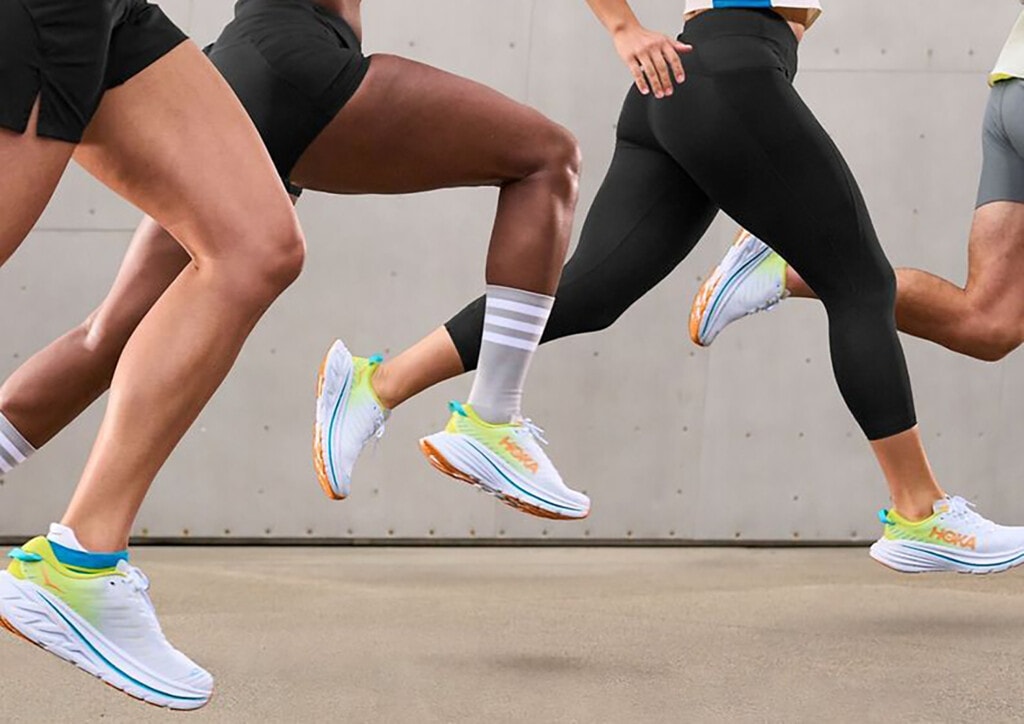
On the road and trails, Hoka has increased its shoe range with speedier, more lightweight models that maintain the soft cushioning the brand is known for. You can enjoy some fantastic runs in the Mach or Clifton models on the road while taking full advantage of the cushioned running shoe feeling that is a real boost in longer distances. On trails, the Speedgoat range has almost been unbeaten for ultra running shoes since its launch.
Brooks: the traditional mainstream running shoes
With its headquarters in Seattle, Washington, Brooks Running (6) (full name Brooks Sports, Inc) is a subsidiary of Berkshire Hathaway. The brand’s history started in 1914 when John Brooks Goldenberg bought the Quaker Shoe Company, makers of ballet slippers and bathing shoes.
The switch then followed to athletic wear, with a peak as a sports shoe manufacturer in the 1970s followed by some hard times (including filing for bankruptcy in 1981!).
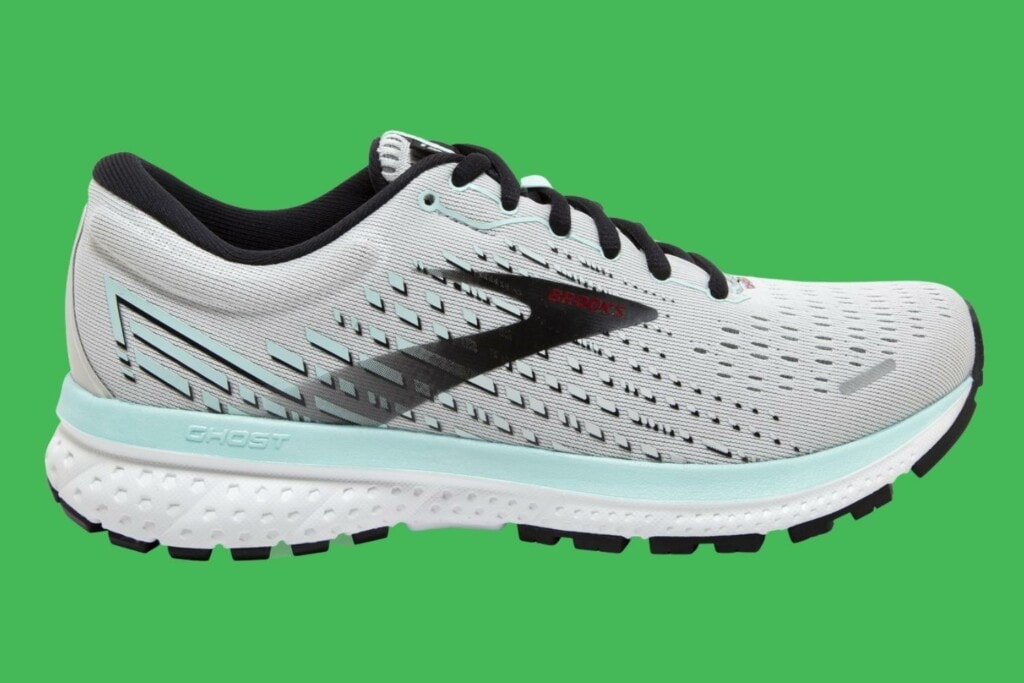
Today, Brooks running shoes have been recognized as some of the best models for women. They have seen renewed attention from the media as the brand focuses on performance technology and sustainability. Trail and ultra running legend Scott Jurek (7) famously won iconic races like the Badwater Ultramarathon, the Spartathlon, Hardrock Hundred Endurance Run, and Western States wearing Brooks shoes. You can read more about why Scott Jurek recommends the Brooks Cascadia 16 and how he works with the brand here (8).
A key feature of Brooks running shoes is the sustainability focus of the brand. Several of their running shoes’ outsoles are made with sand instead of petroleum, and many of the shoes are made with recycled materials. Brooks is one of the only major running shoe brands focusing heavily on creating vegan products.
Key differences between Hoka and Brooks running shoes
Starting with the upper and looking through the entire shoe construction, there are some important differences in how each brand has built its running shoes and what that means for runners.
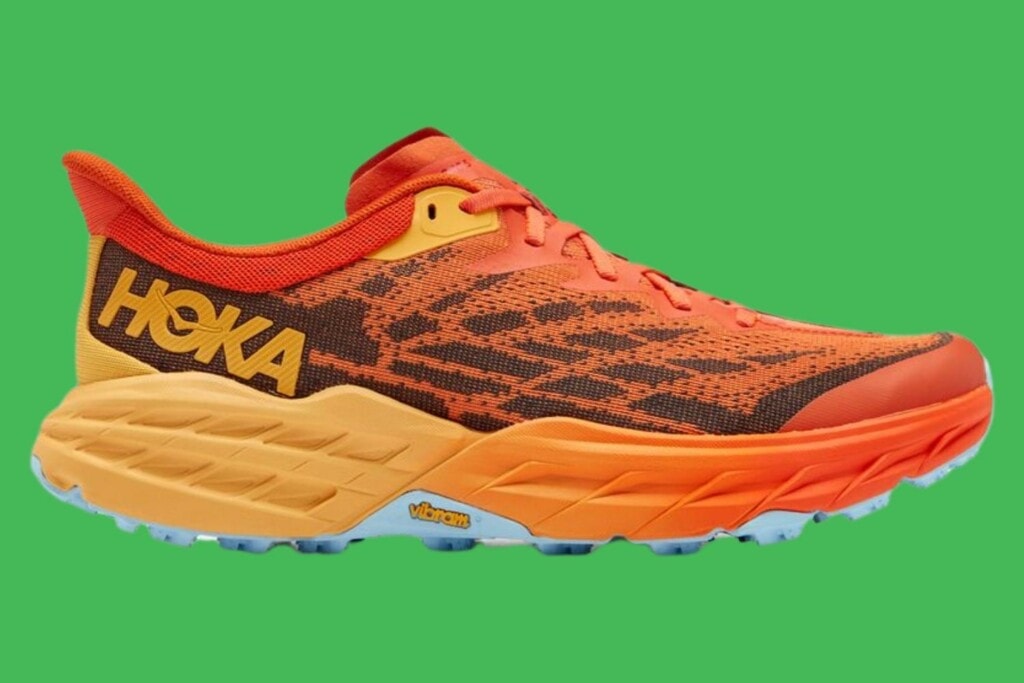
Cushioning
Firstly, Hoka keeps the max cushion midsole as a signature trademark. However, you’ll find different levels of cushioning and some of their recent racing trail shoes like the Torrent and the Zinal are significantly less cushioned than the historical models. Similarly, many models will come with plush cushioning, but a few others are on the firmer side.
In contrast to the max cushioning of Hoka, Brooks adopted a traditional running shoe design with a good overall fit for all types of runners and all levels of experience. Their signature characteristic is the Guide Rails in the midsole that adopt an accommodating approach to stability shoe design. With Brooks, rather than correcting an overpronator or underpronator, the brand claims to adapt to your running gait.
Toe box
Hoka shoes have a smaller toe box than Brooks, who’s on the big end of the spectrum, especially compared to popular road brands like Asics or Saucony. Lately, Hoka trail shoes have increased the toe box for better comfort, so their new shoes are getting better for people with wide feet. Both shoes have similar upper designs, seamless and breathable with traditional lacing.
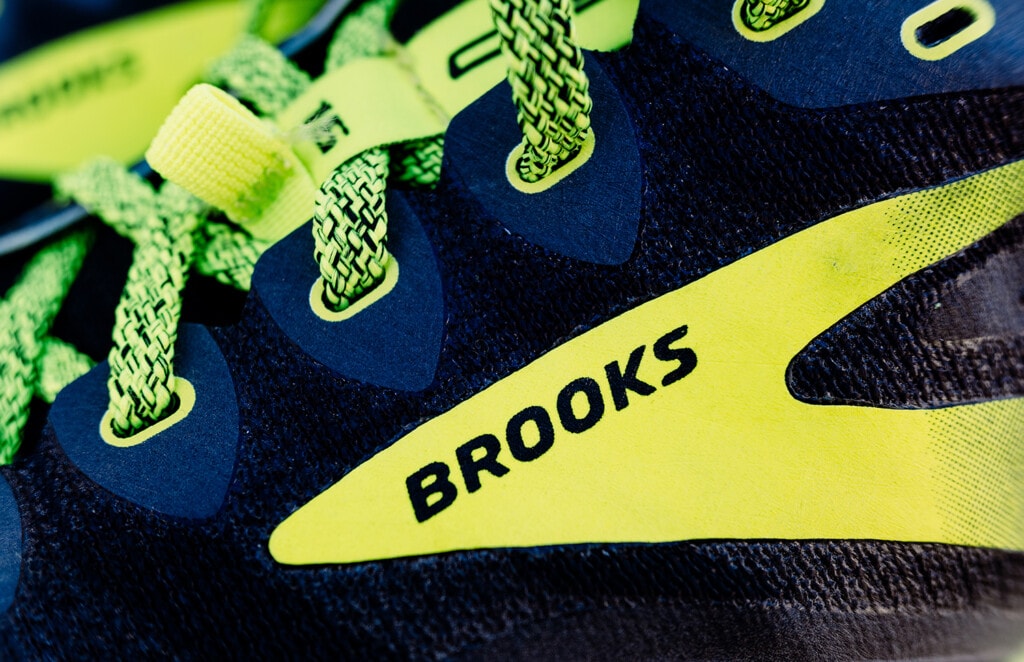
Midsole
When it comes to the midsole, that’s where the main differences arise. Hoka shoes provide excellent shock absorption and a cloud-like feeling thanks to the PROFLY foam and pronounced meta rocker technology. The latter allows for a smooth heel-to-toe transition that gives additional forward propulsion no matter what terrain you’re running on.
Brooks shoes have soft and cushioned models, but they’re nowhere near the level of Hoka. The defining difference is that Brooks has focused on creating a stable shoe that works for all types of gaits. Their two types of cushioning – DNA Loft foam and BioMoGo DNA – offer a soft cushioning that adapts to runners’ preferred foot alignment and foot strike (the latter provides a bit more spring).
Heel design
The other difference between the brands is heel design. Hoka’s approach to stability has been that they want runners to go fast without the risk of injury. To this end, the heel of Hoka shoes features an enhanced protective layer. The brand itself calls the heel the “bucket seat” – invoking the idea of a race car wherein the driver is well protected but can go very fast.
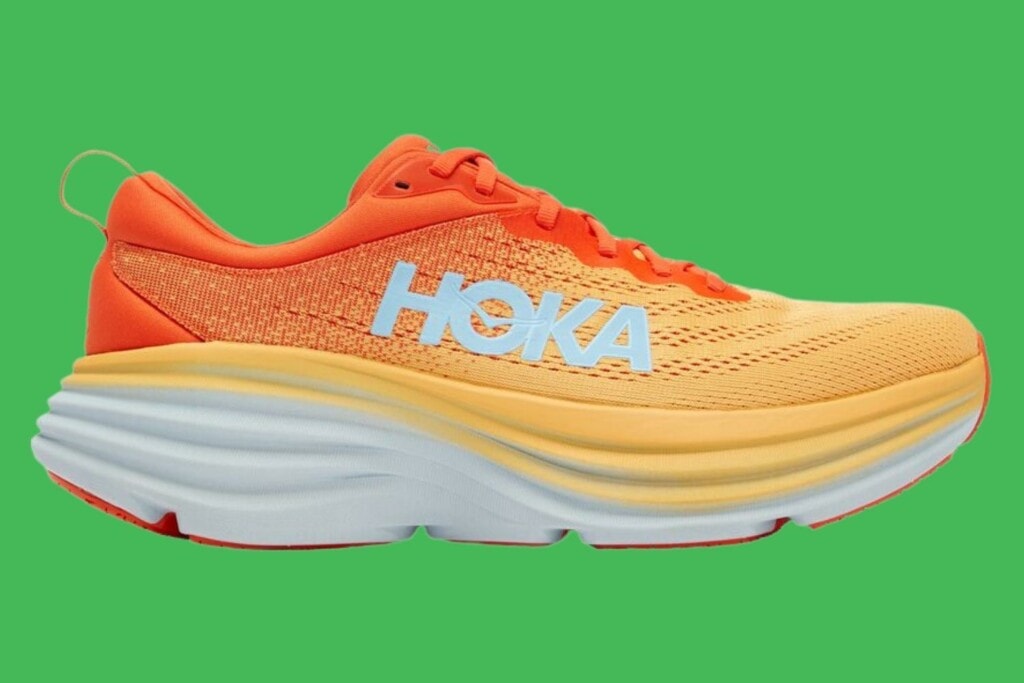
Outsole
Moving to the outsole, we can see that both shoe brands have invested in grip and good traction. Hoka models offer a rubberized foam outsole that is responsive to fast movement and collaborates well with the rocker design for forward propulsion. Their legendary Speedgoat trail shoes feature a superb Vibram MegaGrip outsole with 5 mm lugs that can take trail runners through any terrain and conditions.
You will find a TrailTak rubber outsole in Brooks running shoes for off-road running, providing good traction on wet and dry ground equally. The outsole rubber for most Brooks shoes is made from sand, an important environmental gesture the brand makes when manufacturing its products. On the road, the very bright colors and attractive designs of Brooks shoes are backed up by Omega flex grooves and segmented crash pads in some of the most popular shoes, like the Adrenaline.
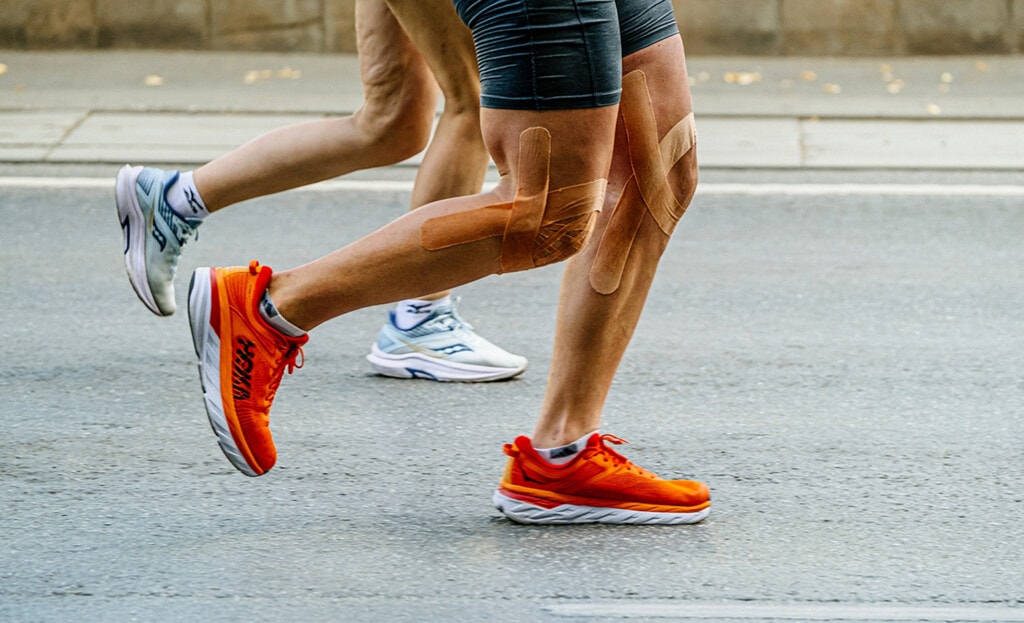
Durability
The last important question when comparing these two popular running shoe brands is how durable their shoes are. Brooks boasts a life expectancy between 300 and 500 miles from their shoes, depending on the model and the terrain you’ll be running on. However, the brand is known for long-lasting shoes, and there’s a consensus that its models will withstand long distances without much of an issue.
Hoka, on the other hand, has had some hits and misses when it comes to the lifespan of its shoes. Some of their racing models, like the trail Torrent and Zinal, may have sacrificed the lightweight for durability and tend to come apart relatively soon after purchase. Given that Hoka shoes are slightly more expensive than Brooks, this is something to be aware of when you trade off weight for sturdiness.
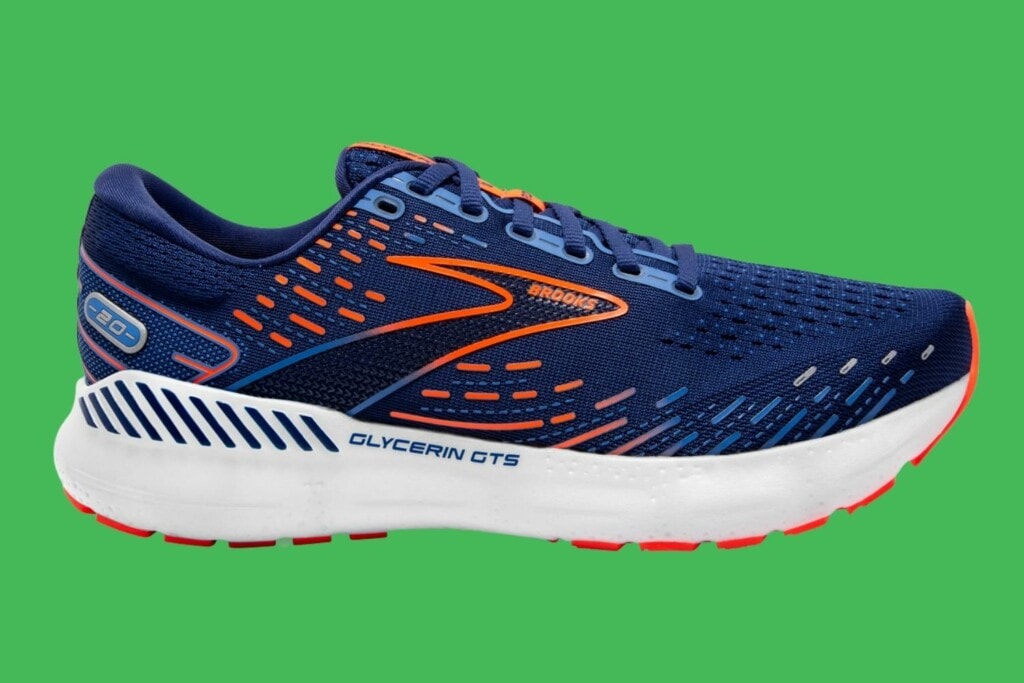
Which brand is best for road running?
While Hoka One One is a brand that trail runners reach for in huge numbers, Brooks has made considerable inroads in off-road running. However, it’s safe to say that Brooks Running shoes are better known for training and racing on the road than Hoka has been. But don’t be fooled: each brand has an excellent offering for pavement running.
Daily running and training
If you’re looking for a shoe that helps you get through regular workouts with a smooth ride, decent midsole support, and breathability, look no further than the Brooks Ghost. This is the brand’s neutral support shoe, providing a high degree of comfort and incredible versatility. It’s also $10 cheaper on average than the Hoka equivalent – the Clifton.
For an everyday shoe, the Ghost wins, in our opinion, given its 12 mm heel-to-toe drop, which makes it more accessible to most runners than the Clifton, featuring only 5 mm in drop. It’s slightly more weighty (8.8 oz/250g in the women’s size 40 for the Ghost vs. 8.1oz/230g for the Clifton), but the comfort and stability make up for that.
For more information, check out the full comparison of the Brooks Ghost vs. Hoka Clifton!
If you’re reaching for a pair of shoes to do some speedy interval training, however, we think the Hoka Mach 5 is a winner. They weigh only 7.2 oz/203g while still giving you the cushioned feeling that is characteristic of the brand, and the aerodynamic design will have you setting PBs in no time.
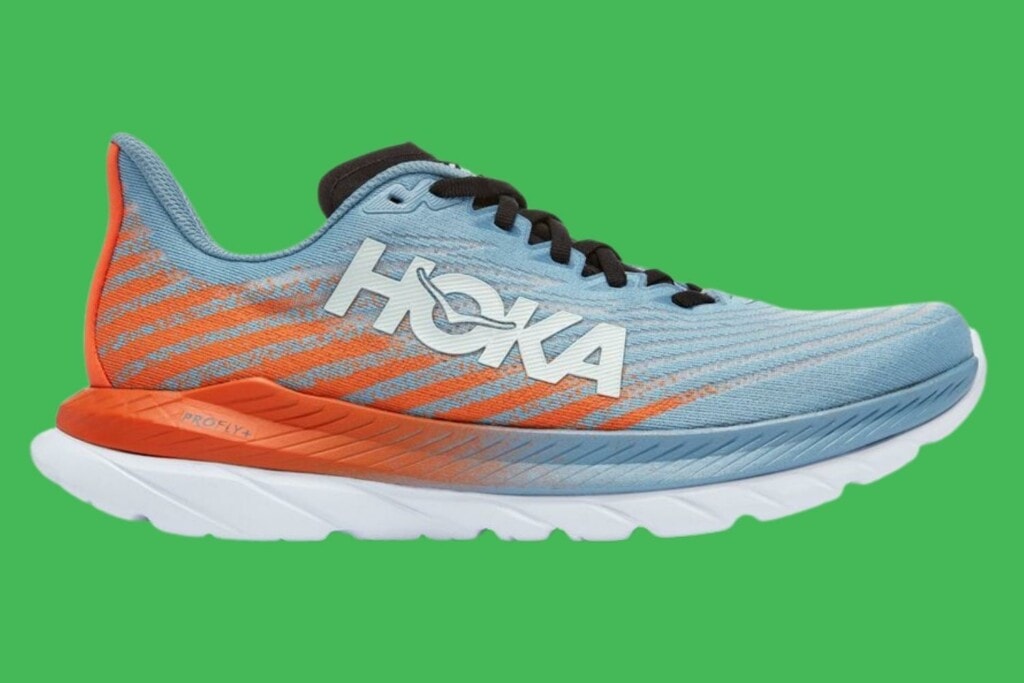
Stability shoes
Brooks shoes are known for making great stability models, so if you’re concerned about your running gait, we recommend looking into a pair of the Brooks Glycerin GTS 20. The GTS stands for “go-to shoe,” so it’s designed to be a versatile model to wear for all types of runs. The Glycerin features the Guide Rail technology mentioned above and has a cushioned heel to help add comfort when running on treadmills.
An equivalent with Hoka is the Arahi 6, featuring a J-Frame that counters overpronation in the sole.
Road racing
After using either brand for your everyday training, you’ll need to choose comfort over light weight and speed when it comes to race day. With both Brooks and Hoka running shoes, some speedier models have less cushioning but are designed to improve bounce and heel-to-toe transitions to have you running faster when it matters.
The Levitate 4 is Brooks’ most popular racing shoe, with the trademark DNA AMP foam midsole and an arrow-point outsole to make it more aerodynamic. However, Hoka wins the speed game with their amazing Carbon X – a light, responsive, fast shoe with a high price tag (on average, a pair of this Hoka shoe costs $200!).
Best brand for trail running: Brooks vs. Hoka
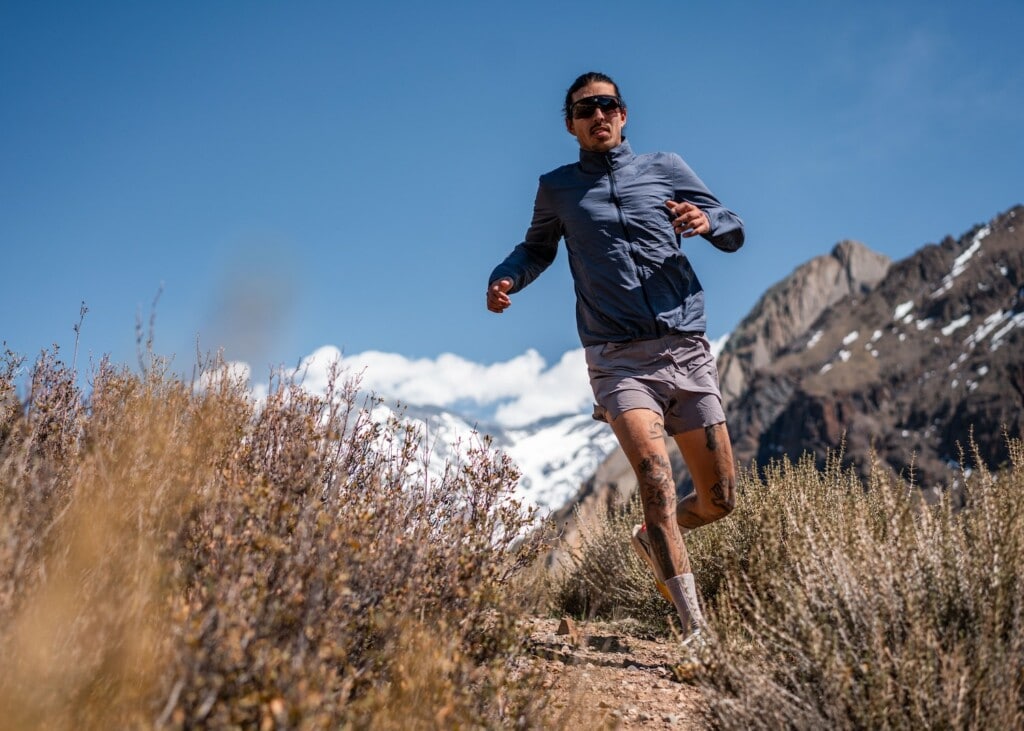
When you run off-road, stability and responsiveness requirements change slightly. While the repeated running movement you get from the road is no longer an issue for the joints, you now need shoes that will protect you from trail debris and adapt to various terrain. Cushioning is key for runners taking on long distances, too.
Trail: Training and medium distances
We recommend training in Hoka’s Torrent range, a responsive yet cushioned fast shoe with excellent grip on wet ground and works well on uneven terrain. Unlike Hoka’s flagship models, the Torrent has a bit more of a drop (5 mm) and not as much padding, but it offers a smooth ride and a lot more ground feel, which can be excellent depending on your playground.
The Brooks Cascadia, on the other hand, is a more solid, sturdy shoe with a highly protective exterior and thick rubber sole. They’re probably best for longer runs, and less speed work as a result.
Ultra-trail
Hoka has long been a trail blazer in this department. The Speedgoat range is the go-to for running anywhere from 10 miles to over 100, and they will be hard to beat as our pick of the best ultra-running shoe for the trails. Named after Karl “Speedgoat” Meltzer (9), a trail icon, this shoe is a love-it-or-hate-it pick for 100-milers and beyond. The Vibram MegaGrip outsole makes it suitable for all weathers and conditions, while the cushioning is soft enough to help you through all terrains, but not so much that your feet will feel unstable.
The rival on Brooks’ side is the Cascadia, Scott Jurek’s design and a versatile shoe that offers soft cushioning, roomy interior, and good grip on various terrain. It’s a versatile option that will suit those looking for more drop (8mm vs. Hoka Speedgoat’s 5mm).
What about walking?
Although both Brooks and Hoka offer excellent quality running shoes, they’re not simply running apparel companies. Their walking shoe models are also pretty great, making them popular shoe brands for people on their feet all day, like nurses, teachers, and more.
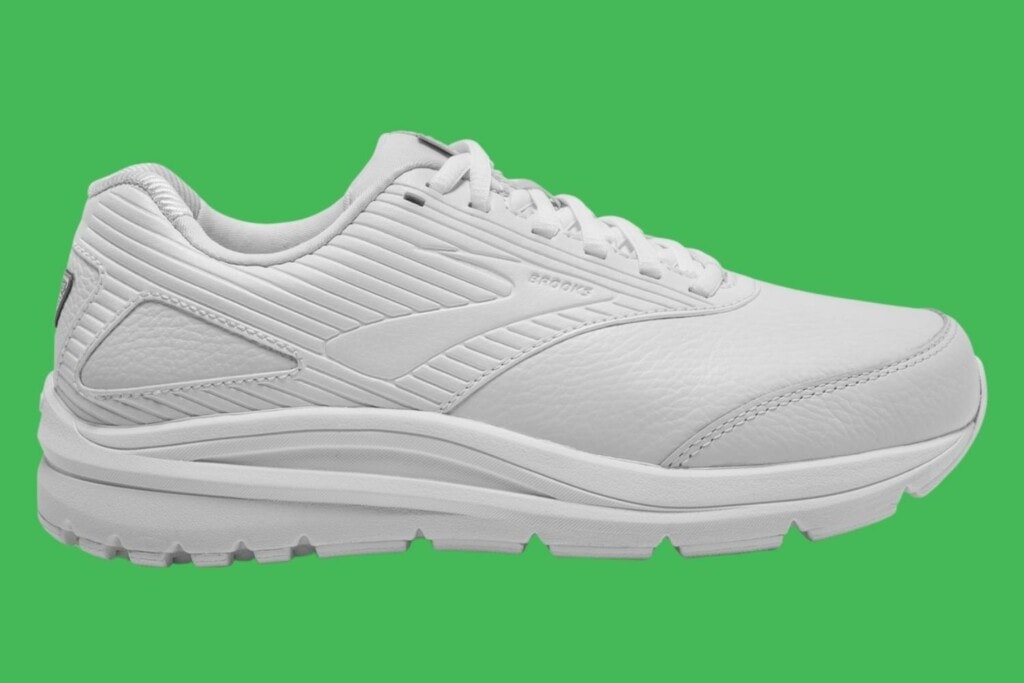
The exciting thing about a brand like Brooks is that their best picks for walking are the same as their running shoes: the Ghost and the Adrenaline are comfortable enough to wear for hours! The more walking-specific model is the Addiction Walker, a cushioned, slip-resistant shoe designed for maximum support and all-day comfort.
On the other hand, Hoka has a great range of hiking and walking shoes that can suit all types of adventure. For everyday walking, we recommend the Challenger ATR or the Stinson ATR; both are incredibly comfortable and stable and could double up as a running shoe if needed. Their wide toe box, wide outsole with the rocker design, and versatility make them ideal on the road and trails.
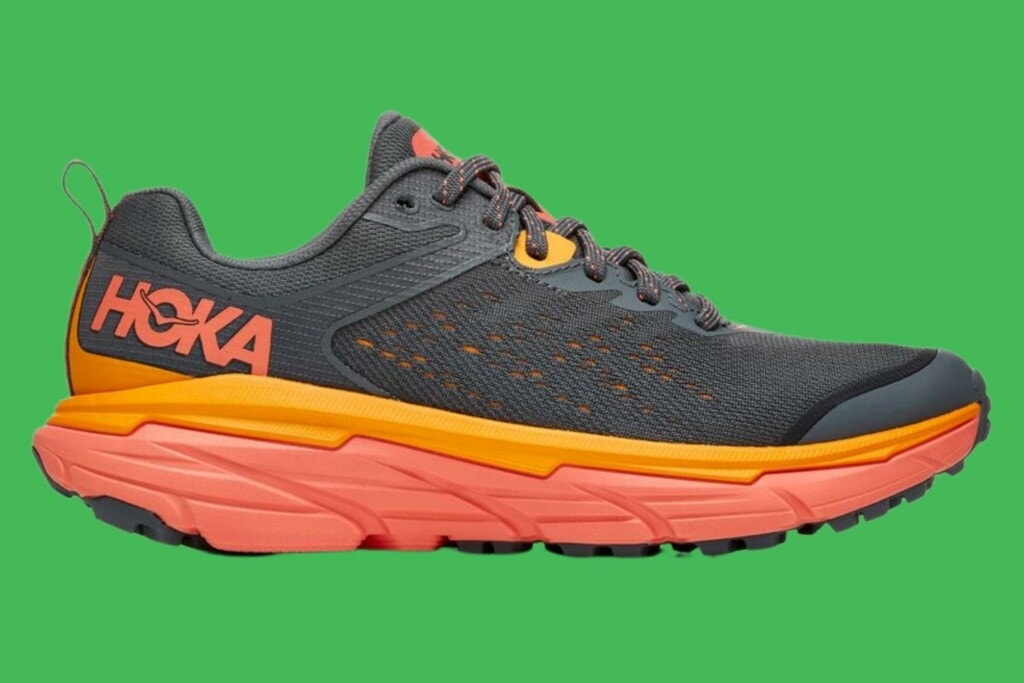
Hoka vs. Brooks: Which should you choose?
It is tough to determine a winner between these two excellent brands. Hoka running shoes have been cruising on trails from the Alps to the Rockies and offer great versatility and comfort on trails. At the same time, the more traditional running shoe range from Brooks also delivers great performance off-road and heaps of comfort and stability support on the trails.
We would recommend choosing a Brooks shoe for less technical terrain off-road and for road running if you need some more arch support. For more technical trails and long-distance running off-road, Hoka win by a mile. Ultimately, you should figure out which shoe shape and design works best for you, as the variations in drop and cushioning make it essential to not just pick one without trying.
Hoka (10) and Brooks (11) have a pretty good shoe finder questionnaire on their websites to get you started when making your decision. Then, try them on in-store and for a few runs before making a final choice!
References
https://www.instagram.com/walmsleyruns/?hl=en
https://www.instagram.com/runcamille/?hl=en
https://www.brooksrunning.com/en_us
https://www.brooksrunning.com/en_fr/blog/gear-stories/scott-jurek-cascadia.html
https://en.wikipedia.org/wiki/Karl_Meltzer

